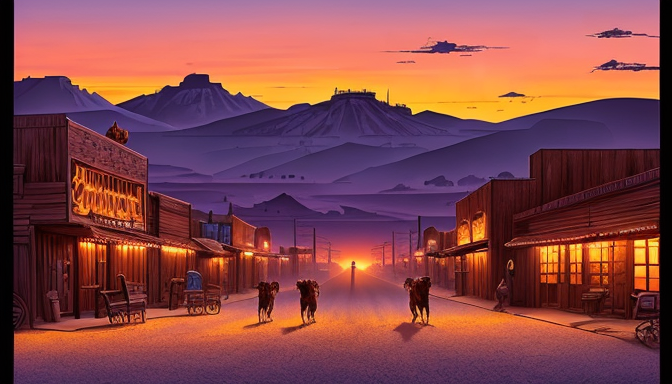The cowboy archetype has galloped through the annals of cinema, leaving an indelible mark on American storytelling. From the dusty trails of the Wild West to the silver screens of Hollywood, the portrayal of cowboys has evolved dramatically, reflecting not just the culture of their time but also the dreams and aspirations of a nation. Early films painted these rugged individuals as heroic figures, embodying the spirit of adventure and freedom. However, as society progressed, so too did the narratives surrounding these iconic characters.
Take a moment to think about it: what does a cowboy represent to you? Is it the freedom of the open range or perhaps the loneliness of the frontier? Each film offers a unique lens through which we can explore these themes. The evolution of the cowboy image can be traced through various cinematic eras, each infusing its own societal attitudes into the portrayal of these figures. For instance, the classic Westerns of the 1950s often depicted cowboys as stoic heroes, while modern interpretations have introduced more complex characters, grappling with moral dilemmas and societal issues.
Moreover, the impact of cinematic cowboys extends far beyond the screen. They have influenced fashion, music, and even the general perception of the American West. Think about the iconic cowboy hats, boots, and the unmistakable twang of country music that resonates with the essence of the cowboy lifestyle. These elements have become cultural symbols, shaping how we view the rugged individualism that the cowboy represents. In essence, cinematic cowboys are not just characters; they are a reflection of our collective identity and the ever-evolving narrative of the American frontier.
The Evolution of the Cowboy Image
The cowboy has long been a symbol of the American spirit, but the way this iconic figure is portrayed in film has undergone dramatic transformations over the decades. Initially, early Westerns painted cowboys as rugged heroes, embodying the bravery and independence of the frontier. These films, often shot in black and white, showcased the wild landscapes of the West, capturing the imagination of audiences and solidifying the cowboy’s role as an American legend.
As society evolved, so did the cowboy’s image. The 1950s brought a wave of films that began to explore the complexities of these characters. Instead of merely glorifying their exploits, filmmakers started to delve into their struggles, showcasing the emotional and moral dilemmas faced by these men. This shift reflected a nation grappling with its identity during times of change, such as the Civil Rights Movement and the Vietnam War.
By the 1970s and 1980s, the cowboy’s portrayal took an even more nuanced turn. Films like “The Outlaw Josey Wales” introduced anti-heroes, challenging traditional notions of good versus evil. Here, the cowboy became a symbol of rebellion and individualism, resonating with audiences who felt disillusioned by societal norms. This evolution is not just a cinematic journey; it mirrors the shifting cultural landscape of America.
In conclusion, the portrayal of cowboys in film has transformed from glorified heroes to complex characters, reflecting the changing attitudes and values of American society. Through these cinematic narratives, we can trace the evolution of the cowboy image, revealing how deeply intertwined it is with the fabric of American storytelling.

Impact on Western Culture
The impact of cinematic cowboys on Western culture is nothing short of profound. These larger-than-life characters have not only shaped our understanding of the American West but have also influenced various aspects of daily life, from fashion to music. Think about it: when was the last time you saw a cowboy hat or boots and didn’t think of a classic Western film? These iconic items have transcended the silver screen to become staples in American fashion, symbolizing a rugged, adventurous spirit.
Moreover, the portrayal of cowboys in films has helped to craft a narrative that resonates deeply with the American identity. The cowboys of yesteryear, often depicted as heroic figures battling against the odds, have become a metaphor for the pursuit of freedom and the quest for the American Dream. This narrative is echoed in countless songs, stories, and even modern media, reinforcing the cowboy’s status as a cultural icon.
To illustrate the influence of cinematic cowboys, consider the following:
| Aspect | Influence |
|---|---|
| Fashion | Cowboy hats, boots, and denim became symbols of rugged individualism. |
| Music | Country and Western genres drew heavily from cowboy narratives. |
| Literature | Many novels and stories have adopted the cowboy archetype, shaping American storytelling. |
In essence, the cinematic cowboy has not only entertained us but has also woven itself into the very fabric of our culture. Each film, each story told, adds another layer to the rich tapestry of Western lore, ensuring that the cowboy remains a pivotal figure in American storytelling.
Frequently Asked Questions
- What inspired the cowboy archetype in films?
The cowboy archetype in films was inspired by a mix of real-life cowboys, folklore, and romanticized tales of the American West. These elements came together to create a larger-than-life character that resonated with audiences, embodying freedom and adventure.
- How has the portrayal of cowboys changed over time?
Over the decades, the portrayal of cowboys has evolved significantly. Initially depicted as rugged heroes, modern films often present them with more complexity, showcasing their vulnerabilities and moral dilemmas, reflecting the changing societal attitudes towards masculinity and heroism.
- What impact have cinematic cowboys had on popular culture?
Cinematic cowboys have influenced various aspects of popular culture, from fashion trends like cowboy boots and hats to music genres such as country and western. They have also shaped the perception of the American West, often romanticizing it while also sparking discussions about its realities.
- Are there any notable films that redefined the cowboy image?
Absolutely! Films like “Unforgiven” and “No Country for Old Men” have redefined the cowboy image by presenting them as flawed characters, challenging traditional notions of heroism and morality in the Western genre.